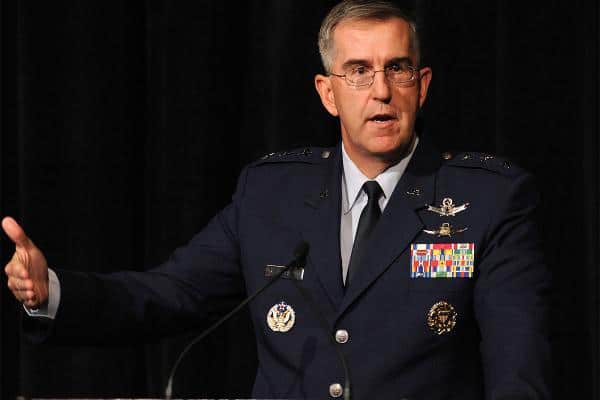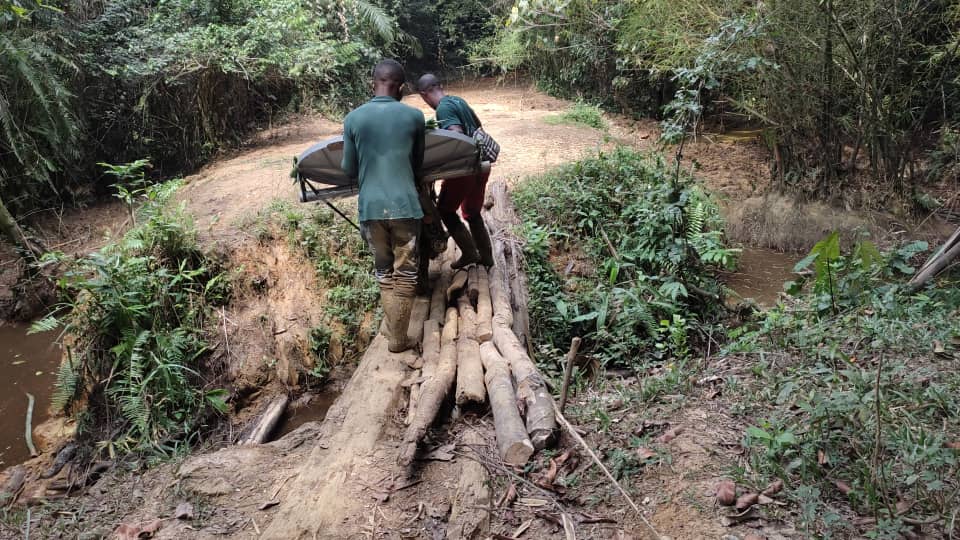Hyten: Space Command Should be an Active Force in Dynamic Times
General John Hyten bridles at the perception of his Air Force Space Command being comprised of technicians in a 9-to-5 office environment reacting to threats thousands of miles above Earth. It’s a perception he wants to correct, Hyten told the Air Force Association’s Mitchell Institute for Aerospace Studies “Space Power for the Warfighter” breakfast seminar, on December 8 in Washington.
Space Command should be proactive, and space is no longer tranquil. It’s a contested environment, the Commander said in a speech entitled “My First Year in Perspective: What Did We Get Done?”
Among other critical space missions, Space Command is challenged to provide and maintain the Global Positioning System capabilities warfighters use to target and time weapons and to navigate on the battlefield. The command also combines military and commercial satellite assets to give those branches the ISR and communications needed to win today’s wars.
Where once there was a race to the moon, the space race today is to maintain the technological superiority and freedom of access to space that the U.S. enjoys in preparation for the wars of tomorrow. That edge helps in coping with satellite interference, both intended and incidental, as well as with looming kinetic threats to our space assets from China and Russia that could turn space into a debris-infested wasteland. Hyten contrasted the potential aftermath of war on the ground with that in space. On the ground, he said, rebuilding a bombed area can return it to its previous state of usefulness in a short time. But geosynchronous orbit is the most valuable real estate in space, and debris there can render it useless for centuries.
As part of maintaining that edge, Hyten wants control of the seven satellite systems operated by Space Command to be fused into a single enterprise. The new enterprise would knock down barriers to communication that were part of the stove-piped control system approach, and it would also facilitate missions that can take advantage of the capabilities of different mission systems.
Key to the future is also the concept of the “Space Mission Force” (SMF). Training of the first SMF will begin next spring at Schriever Air Force Base, with airmen rotating between dedicated duty in satellite and ground systems operations, and then rotating back for intensive training and certification. This links closer to how other arms of the Air Force conduct business.
He also highlighted the role for the commercial sector in the new enterprise, which has been discussed extensively over the past year. One idea advanced is for commercialization of certain satellite flight operations missions freeing the uniformed SMF personnel to plan and execute more critical missions, react to threats, monitor satellites and stay ahead of a rapidly changing potential battlefield in space.
The SMF represents a change in Air Force thinking, Hyten said. The service also should change the way it thinks about space system plans and acquisitions. Threats to assets should be factored into equations predicting their lifetimes. He highlighted that a recent Analysis of Alternatives recommended maintaining the existing architecture with few changes. This is not acceptable in the new contested and congested space.
The status quo is not resilient, Hyten said, and the use of outdated metrics is no longer a valid path toward maintaining space superiority. This is a message the Air Force needs to convey to those who provide funding to secure that future, including Pentagon planners and Congress.
Determining threats is part of Space Command’s interaction with the Intelligence Community and other service branches at the Joint Space Operations Center (JSpOC). Early identification of a threat can allow Space Command minutes (for satellites in low Earth orbit) or hours (in GEO) to react with capabilities already built into space assets. Also, Space Command is developing and refining Tactics, Techniques and Procedures for using those capabilities and doing realistic testing of these at the newly created Joint Interagency Combined Space Operations Center (JICSpOC).
Other branches are starting to include Space Command in planning operations. Such cooperation is fostering an environment in which the Intelligence Community, Space Command and industry can better develop a space architecture to meet the demands of a dynamic future.






















